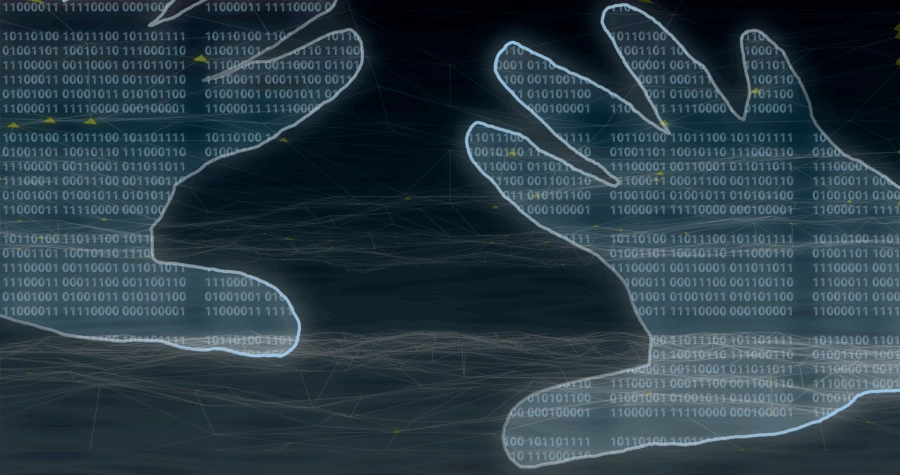What exactly is a ransomware attack?
A ransomware attack is a form of cybercrime in which hackers infiltrate a computer system and lock important files or entire systems, preventing the company or user from accessing them.
The attackers encrypt the data so it becomes unreadable, and then demand a ransom payment (usually in cryptocurrency) to decrypt it. Often, they also threaten to release or sell the data if the ransom is not paid, adding additional pressure.
The dangers of ransomware attacks
The potential risks and impacts of ransomware attacks are often underestimated, but in a serious case, such an attack can shut down an entire operation! Whether it’s a hospital, a school, or a business, ransomware can paralyze everything from emails to critical systems.
Moreover, these attacks are extremely costly. Victims may be forced to pay millions to recover their data or rebuild systems—especially if backups are missing, fail, or the ransom isn’t paid.
Ransomware attacks are increasing significantly
In recent years, the number of ransomware attacks has steadily risen:
- Over 5,000 ransomware attacks in 2024
Quelle: darkreading - 950 in Germany – the second most affected country after the US
Quelle: kpmg - Approximately 195 million records compromised in 2024
Quelle: totalsecurity - From mid-2023 to mid-2024, Germany saw an average of 309,000 new malware variants per day, a 26% increase over the previous year
Quelle: thecyberexpress - Double extortion attacks (where data is both encrypted and threatened with release) doubled compared to 2022
Quelle: kpmg
But it doesn’t affect everyone, right?
Unfortunately, it does!
Who becomes a target depends on many factors—especially the attackers’ interest.
Public services such as hospitals, schools, and municipalities are particularly affected. Their services and collected data are considered critical. A disruption or a leak of such sensitive and often personal data has massive consequences—not only for the institution itself. The pressure to pay the ransom to restore operations or avoid further damage is especially high in these sectors.
However, organizations of all sizes are interesting targets. Even individuals can be attacked, although this is less common in high-ransom cases.
Ransomware is becoming increasingly sophisticated: Attackers now use advanced methods such as phishing emails and software vulnerabilities, often supported by automated tools or artificial intelligence. This means that every employee with access to internal and external systems must be vigilant—attackers can gain entry through almost any channel!
The following list shows which industries were most affected in 2024:
- Healthcare: 20% increase in attacks compared to the previous year, including the Change Healthcare breach affecting 100 million people
Quelle: comparitech - Retail: 96% increase in ransomware attacks, with major disruptions at companies like Marks & Spencer
Quelle: theguardian - Education: Over one-third of schools in England were affected, causing major financial losses and disruption
Quelle: thesun - Finance: Banks and financial institutions faced average costs of $6.08 million per incident in 2024
Quelle: cybersecuritynews - Government: Public authorities and municipalities were key targets. The South Westphalia IT attack, for example, affected 72 municipalities and caused weeks-long service outages
Quelle: wikipedia
Can’t I just pay the ransom?
Sometimes yes – but:
There’s no guarantee that the hackers will unlock your files or refrain from publishing them.
Paying ransoms may encourage further attacks rather than prevent them. And companies must be financially capable of paying—it’s not uncommon for a single incident to cost over $900,000.
- Economic damage: Cyberattacks, including ransomware, caused €178.6 billion in damages in 2024, €30.4 billion more than the previous year
Quelle: reuters - The average global cost of recovery after a ransomware attack in 2024: $1.85 million
Quelle: underdefense - Average ransom payments rose from $1.5 million in 2023 to over $2.5 million in 2024
Quelle: sophos - Average recovery costs in Germany in 2021 were estimated at $1.73 million, a 48% increase from 2020
Quelle: comparitech - Healthcare: Average ransom demand $5.7 million; payments around $900,000
Quelle: industrialcyber - Government agencies: Average ransom demand $2.3 million; payments $923,000
Quelle: industrialcyber
How to protect against ransomware
Effective ransomware protection is always preventive. Once access is lost, decryption is time-consuming, costly, and often not feasible for critical infrastructures. Without the decryption key, it can take days, weeks, or months to unlock encrypted data.
That’s exactly what attackers count on—putting pressure on victims to pay.
So what should you do?
- Reliable backup solutions: Back up data regularly and store it securely offline.
- Employee awareness training: Educate staff on phishing detection and safe practices.
- Multi-factor authentication (MFA): Implement MFA to add another security layer.
- Regular updates: Keep software and systems patched and up to date.
- Incident response planning: Create and regularly test plans to act quickly in emergencies.
Conclusion
Regardless of industry or company size, ransomware protection is not just IT’s job—it’s a shared responsibility. In sectors with high societal or economic relevance—such as healthcare, education, finance, or government—security awareness is not a luxury, but a duty.
Where personal data is processed and critical services are provided, an attack can have public consequences. In such environments, preventive security must be embedded in strategy and budgeting.
Across industries, cybersecurity must be seen as a strategic leadership priority. Only organizations that prioritize, invest, and embed digital resilience into their culture can effectively defend against the growing threat of ransomware.
This article was supported by the AI application ChatGPT by OpenAI – especially for research, content structuring, and drafting some sections. All content was reviewed, adapted, and contextually framed by the author.
AI is used here as an editorial tool to present complex topics clearly and efficiently. Full creative and content responsibility remains with the author.



